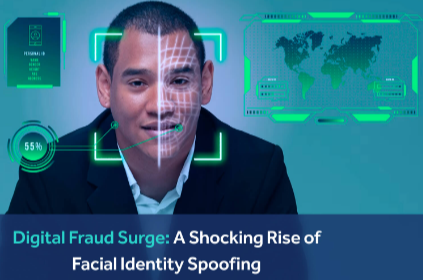
Facial identity spoofing has dramatically changed from both its historical background and the current technology scene. In step with the fact that face recognition systems are now becoming more integral to security frameworks, risks of identity spoofing also elevate; thus, both detection and prevention methods have been developed in new challenges. This article explores the history and how facial identity spoofing evolved, its connection to biometric security, and the advanced techniques used today to protect against these threats.
Early Days of Identity Spoofing: Historical Background
Facial identity spoofing, even as it relates to this day’s technologies, has its root basis in the very early days of deceptive practice, throughout which history seemingly offered criminals all avenues to disguise themselves and produce fake documentation to circumvent means of identity verification, the technology did not exist then, yet the beat-the-authorities-into-believing-falsehoods concept was certainly one that had been done for a while. Rather, increased sophistication belonged to biometric technology. Meaning as societies advance, then progress does the means for identity spoofing. What had begun with fake beards or wigs has now evolved into digital deception through facial identity spoofing techniques in modern systems.
Rise of Biometric Systems and Face Recognition Technology
Biometric technology first found its way into the late 20th century, opening the doors to much more complex and sophisticated security systems. Biometrics, or facial recognition, in particular, was the next step in safe identification. Facilitated by these advancements came facial identity spoofing. The problem with face recognition systems is, after all, the reliance on unique physical characteristics that can be imitated or replicated. Identity spoofing in the biometric area started to blossom when hackers were able to develop mask-based attacks, photo attacks, and video playback that overlapped with facial recognition. This marked the change that led to a new form of biometric spoofing that further instilled a need for stronger solutions.
Modern Techniques of Facial Identity Spoofing
Current facial identity spoofing has evolved into sophisticated technologies that are in themselves standalone technologies intended to deceive face recognition systems. Spoofing face recognition systems is rapidly becoming a high-stakes issue, especially for industries with high security standards such as banking and law enforcement. Techniques by which attackers are discovering how to evade even advanced biometric technologies include 3D-printed masks, video replays, and AI-generated deepfakes. Another technique that enables an attacker to change features in real-time is face identity spoofing. In this case, the attacker changes his face to match the identity of the target. The emergence of AI has also brought out more threats as an attacker can now use AI to build facial replicas of a nearly perfect nature to commit spoofing attacks.
Challenges in Preventing Facial Identity Spoofing
With the advancement of techniques under development by attackers, preventing identity spoofing will also become increasingly challenging. Face recognition systems are first affected by distinguishing between a real person and a spoofed face. For example, biometric spoofing often exploits subtle anomalies that may not be detected by vulnerable hardware or software systems. Although there is ongoing development of new liveness detection mechanisms, such as eye movement tracking, 3D face mapping, and infrared sensors, these are far from perfect. The rapid advancements in AI and machine learning tool systems pose even greater challenges in face identity spoofing prevention because the availability of such tools makes it easier to spoof and relatively more effective.
Read more: How Cloud Computing is Revolutionizing Software Development
Recent Advancements in Anti-Spoofing Technology
Due to these emerging threats of facial identity spoofing, security has been improved in several ways. Modern face recognition systems now embrace multi-factor authentication, which unites biometric verification with behavioral data, voice recognition, or even passwords. Anti-spoofing technology also integrates features from liveness detection, working towards determining whether the captured image or video belongs to a real person rather than a photograph or mask. More importantly, recent deep-learning algorithms have been employed in the identification of fine differences that exist between actual and spoofed faces. It is hence made tough for advanced attackers to perform feasible biometric spoofing. These technological advancements are fundamental to mitigating face identity spoofing.
Future of Facial Identity Spoofing and Protection
Looking forward, the battle will be the continued clash between spoofing and detection. This is because with the evolution of technology comes the evolution of the attacker method. The future of facial identity spoofing would involve more proficient AI-generated deepfakes, along with more real-time facial manipulation techniques, that would make detection even tougher. However, as biometric spoofing becomes richer and more evolved, the security system will have to implement AI-based solutions that can learn and evolve along with evolving threats. Regulatory frameworks in terms of data privacy and biometric security will also come into play and shape the landscape of face identity spoofing prevention, thus offering stronger mechanisms of protection in place.
Wrapping It Up
Facial identity spoofing has developed from straightforward disguises to complex, AI-driven attacks that even the most advanced biometric systems are not equipped to counter. Although face recognition is steadily gaining ground as security in more corners of the world, threats from face identity spoofing tend to rise accordingly. But there’s hope with new anti-spoofing technologies: liveness detection and AI-activated algorithms that might hopefully salvage a safer future. The fight will continue, but innovation and stronger regulatory measures will make possible mitigation of biometric spoofing threats.




